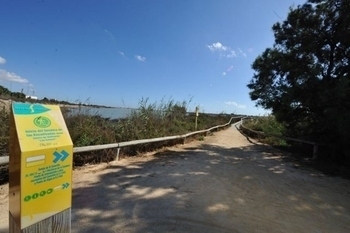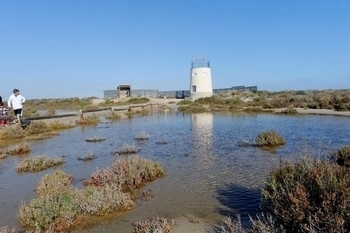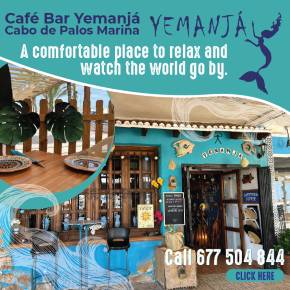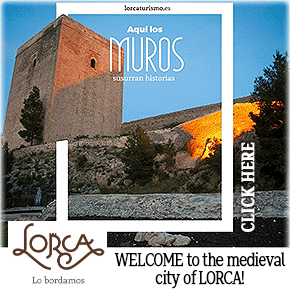

Guidelines for submitting articles to Mazarron Murcia
Hello, and thank you for choosing Mazarron Murcia to publicise your organisation’s info or event.
Mazarron Murcia is a website set up by Murcia Today specifically for residents of the urbanisation in Southwest Murcia, providing news and information on what’s happening in the local area, which is the largest English-speaking expat area in the Region of Murcia.
When submitting text to be included on Mazarron Murcia, please abide by the following guidelines so we can upload your article as swiftly as possible:
Send an email to editor@spaintodayonline.com or contact@murciatoday.com
Attach the information in a Word Document or Google Doc
Include all relevant points, including:
Who is the organisation running the event?
Where is it happening?
When?
How much does it cost?
Is it necessary to book beforehand, or can people just show up on the day?
…but try not to exceed 300 words
Also attach a photo to illustrate your article, no more than 100kb

Parque Regional Salinas y Arenales de San Pedro del Pinatar
The Regional Park of Las Salinas y Arenales of San Pedro del Pinatar
The Regional Park of Las Salinas y Arenales de San Pedro del Pinatar is a wetland area which covers 856 hectares, and includes salt flats, dunes and beaches between the Mar Menor and the Mediterranean.
It is one of the most important locations in San Pedro del Pinatar, not only for its value as a tourist attraction, but also for its value as an area of environmental importance and the wildlife it attracts, particularly the birdlife (including flamingos!) which draws enthusiasts from across the Region of Murcia.
The park is a thoroughly enjoyable place to visit for anyone who enjoys walking, cycling, birdwatching or just being outdoors, and is a unique environment holding a wide variety of flora and fauna.
 Most of the park consists of the salt flats themselves, which are divided into different flat pond areas by small earth ridges or stone walls. Part of the area is private property with restricted access, and is used to produce salt on an industrial scale by the company "Salinera Española".
Most of the park consists of the salt flats themselves, which are divided into different flat pond areas by small earth ridges or stone walls. Part of the area is private property with restricted access, and is used to produce salt on an industrial scale by the company "Salinera Española".
The area of the park which is open to the public consists of beaches, dunes and pine groves, and visitors can  move around by bicycle or on foot.
move around by bicycle or on foot.
The best-known fauna in the reserve are the pink flamingoes which usually arrive at the end of the summer, but apart from these distinctive visitors, there are also gulls, albatrosses, herons, grebes and crakes, as well as a large number of plant, animal and bird species.
 The environment is a fascinating one for those who have an interest in birdwatching, photography, painting or just enjoying a walk or cycle.
The environment is a fascinating one for those who have an interest in birdwatching, photography, painting or just enjoying a walk or cycle.
To help visitors enjoy the park area to the full, a number of facilities have been created, including purpose built hides for birdwatchers, and raised walkways to enable families to enjoy the open air environment, even when  the winter rains make some of the ground level paths difficult to navigate.
the winter rains make some of the ground level paths difficult to navigate.
A cycle lane runs down the roadside, as well as a path, enabling those who wish to park outside of the park itself to do so and walk, run or cycle into the park.
 If you're a visitor to the area, you'll find bicycles for hire down on the main seafront of Lo Pagán, and also by the Baños de Lodo mud baths. The easiest landmark to look out for is the white windmill of Quintín, close to the seafront and mud bathing area: bicycle hire facilities are opposite the windmill.
If you're a visitor to the area, you'll find bicycles for hire down on the main seafront of Lo Pagán, and also by the Baños de Lodo mud baths. The easiest landmark to look out for is the white windmill of Quintín, close to the seafront and mud bathing area: bicycle hire facilities are opposite the windmill.
The park is also popular with local residents who take a bicycle, go for an enjoyable cycle ride, then enjoy a Menu del Día out in one of the local restaurants in the yacht marina or along the seafront.
Most of the park is only accessible by foot or on a bicycle as the main access road cuts straight through the middle down to the yacht Marina on the Mediterranean coastline, although there are various other entry points via beaches.
For those wishing to park within the park area itself and then cycle from there, 2 different options are worth considering:
Park by the Marina
This is a good central position to park, and there are also restaurant facilities inside the marina which are  open to the public, or outside of the marina itself. From here, it is easy to cycle along the road and into the park, or set off on foot along the beaches on either side of the marina, or into the wetlands of the park.
open to the public, or outside of the marina itself. From here, it is easy to cycle along the road and into the park, or set off on foot along the beaches on either side of the marina, or into the wetlands of the park.
Park half way down the access road
Part way down the access road is a dedicated parking area. From this point, several paths lead off into the Salinas park, with a raised wooden walkway straight across to the Playa de Torre Derribada, which is about a 10 minute walk from the parking area. There are various paths which branch out from this point, leading off into the Salinas or down to various points along the beach.
Where is the Parque Regional Las Salinas, San Pedro del Pinatar?
Click for map, Parque Regional Las Salinas.
Information about the Parque Regional Salinas y Arenales de San Pedro del Pinatar
 A special information centre is located close to the entrance to the park, containing a vast range of info about the park, its flora and fauna.
A special information centre is located close to the entrance to the park, containing a vast range of info about the park, its flora and fauna.
Static display boards give all the information about the different species which can be found, as well as showing the different techniques used by mankind to both fish in the area and harvest sea salt.
The centre also runs various voluntary schemes, so if you'd like to offer services as an environmental volunteer, then this is a good place to register and there are regular family activities run by the centre, taking the form of family workshops, walks or birdwatching activities (see feed below for latest information).
The staff also have a variety of leaflets and maps and can give advice about specific species or potential locations where they might be found.
Centro de Visitantes las Salinas
Avenida de las Salinas
Telephone 968 17 81 39
Click for map, Avenida de las Salinas
Centre Opening Hours:
Tuesday to Sunday, September to June from 10am to 2pm and 3pm to 6pm
July and August, from 8.30am to 3.30pm.







































